MRI Safety

Did you know that the strong magnetic field surrounding an MRI scanner is always present, even when the scanner is not being used? The magnetic field is invisible and totally imperceptible unless you happen to be carrying something metallic near the MRI scanner, then you would feel a tug. Many of our MRI safety practices are aimed at identifying these hazardous metal objects before they get near the scanner.
Defining moment and push for better MRI safety
In a sentinel event in July 2001, 6-year-old Michael Columbini was tragically killed in an MRI accident in New York state. A ferrous oxygen tank was brought near the MRI scanner and became a lethal projectile under the strong magnetic force that surrounds the MRI scanner. The tragic event brought about changes to MRI safety practices globally and the anniversary of Michael’s death is used to observe MRI Safety Week.
Most MRI incidents can be avoided. Regular MRI safety training is one of our greatest weapons in preventing accidents. Many MRI safety incidents happen when non-MRI personnel are trying to help with patient care. Others happen during medical emergencies (codes) when personnel are focused on resuscitating a patient and forget about the invisible danger of the magnetic field. Unfortunately, even with an increased focus on safety, accidents in MRI departments still happen. A recent study found that 74% of MRI incidents could have been prevented by following standard safety practices.
OHSU in action
Every year OHSU Diagnostic Imaging requires annual training for anyone who might enter an MRI environment. Compass training will launch on July 1 and is assigned to OHSU employees by their manager. Those seeking MRI Safety approval need to complete two steps: answer questions in Enterprise Health followed by completing a Compass training module. Typical approval turnaround time is 3-5 business days with a minimum of 24 hours.
This year we will have tables set up in the Hatfield ninth-floor atrium (across from the Plaza Café) to pick up your badge stickers, which are required to enter the MRI department. Pastries will be available on a first-come first-served basis!
Check back soon for the tabling schedule!
Contact us if you have more questions regarding MRI Safety: MRISafety@ohsu.edu
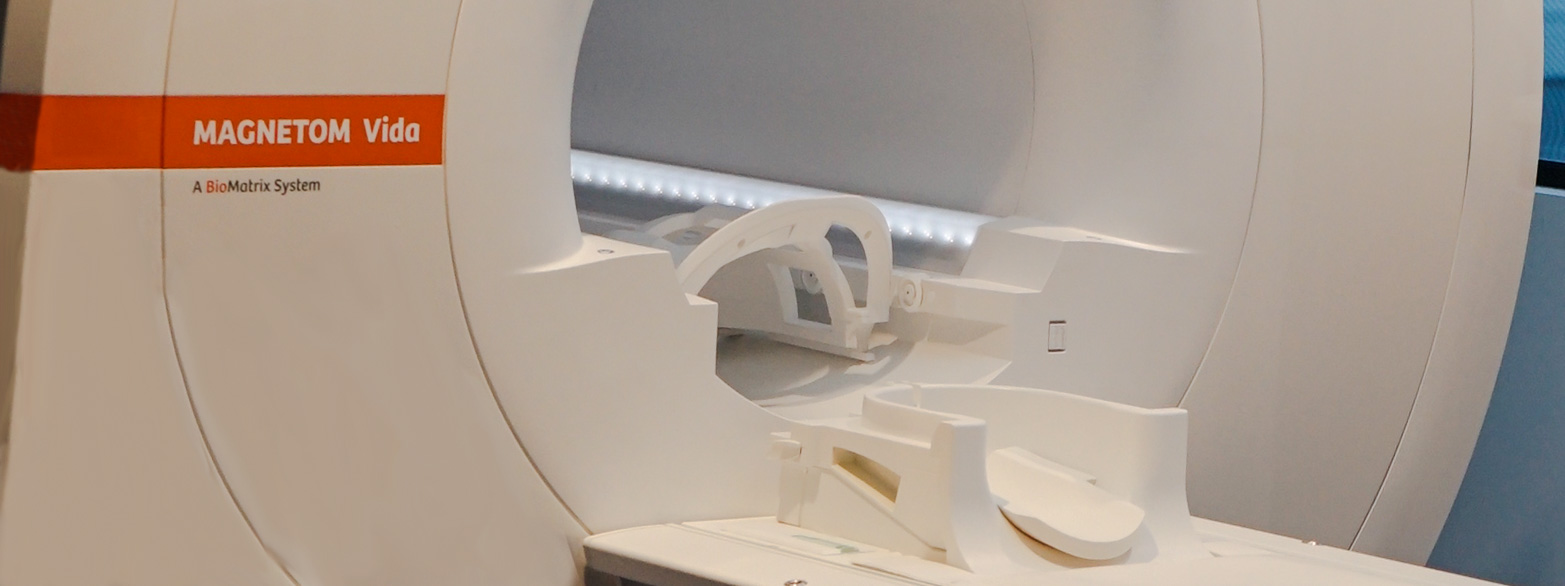
What is MRI?
Magnetic Resonance Imaging (MRI) is a noninvasive diagnostic exam that uses radio waves (RF) and a strong magnetic field to move the electrical components of our cells. The MRI scanner is an extremely powerful magnet that attracts items with ferromagnetic substances such as iron, steel, cobalt, and nickel. Be aware that the magnetic field from the scanner, though powerful, cannot be seen or felt. Only ferromagnetic substances can be pulled to the magnetic field, and the strength of the pull grows the closer they get to the center of the magnet. When a ferromagnetic object gets within the scanner's magnetic field and is pulled rapidly into the scanner, this is called the "missile effect." These objects can be pulled toward a magnet or be magnetized, so they must stay a safe distance from the MRI. It's important to remember that the MRI machine is always magnetized—it's always on.
OHSU MRI is fully accredited, and our yearly training follows the guidelines put forth by our accrediting body, The American College of Radiology (ACR). The ACR has also defined 4 safety zones around MRI units. Each zone represents an increased level of magnetic field exposure and, as a result, increased safety risks. Zones 3 and 4 can only be accessed after training and permission is given.
Implanted medical devices and other foreign bodies
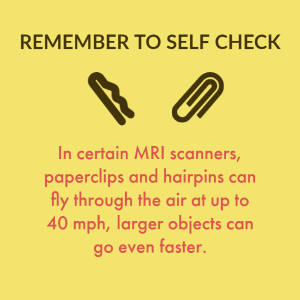
Many patients and employees have different and complex medical histories. The most important thing is to screen patients and yourself. Many implanted and electronic medical devices have ferromagnetic material in them. OHSU has become the leader in the state of Oregon for scanning patients with implants.
Active implants (Pacemaker, VNS, DBS, Spinal Cord Stimulators, Pain pumps, Insulin pumps, implanted chemotherapy pumps, and loop recorders) require very specific scanning parameters to minimize risk to the implant and the patient. A specific type of active implant could have many manufacturers and multiple models, and each manufacturer and model could have different requirements for safe scanning.
All implants that have been approved for scanning are required to be tested in an MRI environment for heating, torque, and rotational translation, and the data is presented to the FDA for approval. Once the FDA approves an implant as safe or conditional, the FDA labeling for safe scanning of a device is then set. FDA labeling changes are often due to changes of the implant and/or to manufacturers gathering data of adverse events or scanning off label. So, the Implant review process always requires that each implant be reviewed individually.
With the approval of the MR Radiologist, the device can be scanned off label in risk vs. benefit evaluation. Passive implants are screened to ensure that they are not in the area of interest. Additionally, if a patient reports an injury from any adverse event that involved metal (gunshot wound, work-related metal in the eyes, history of a metallic foreign body), the patient will be sent for review and referred to the MR Radiologist for approval after x-rays and CTs are reviewed.
MRI Implant review process
The major goal of the MRI Implant Review Process is to maximize patient safety and to ensure that patients with passive and active implants are scanned on the correct MRI scanner and that the MRI technologist has the correct FDA labeling for the patient implant. The order is sent for Implant review when a patient calls to schedule their MRI, and it has been determined that the patient has an implant. Implant review also creates opportunities to communicate with the patient to bring any controllers, charge implants, schedule impedance checks, and schedule aftercare for implants that need to be checked or adjusted post-MRI.
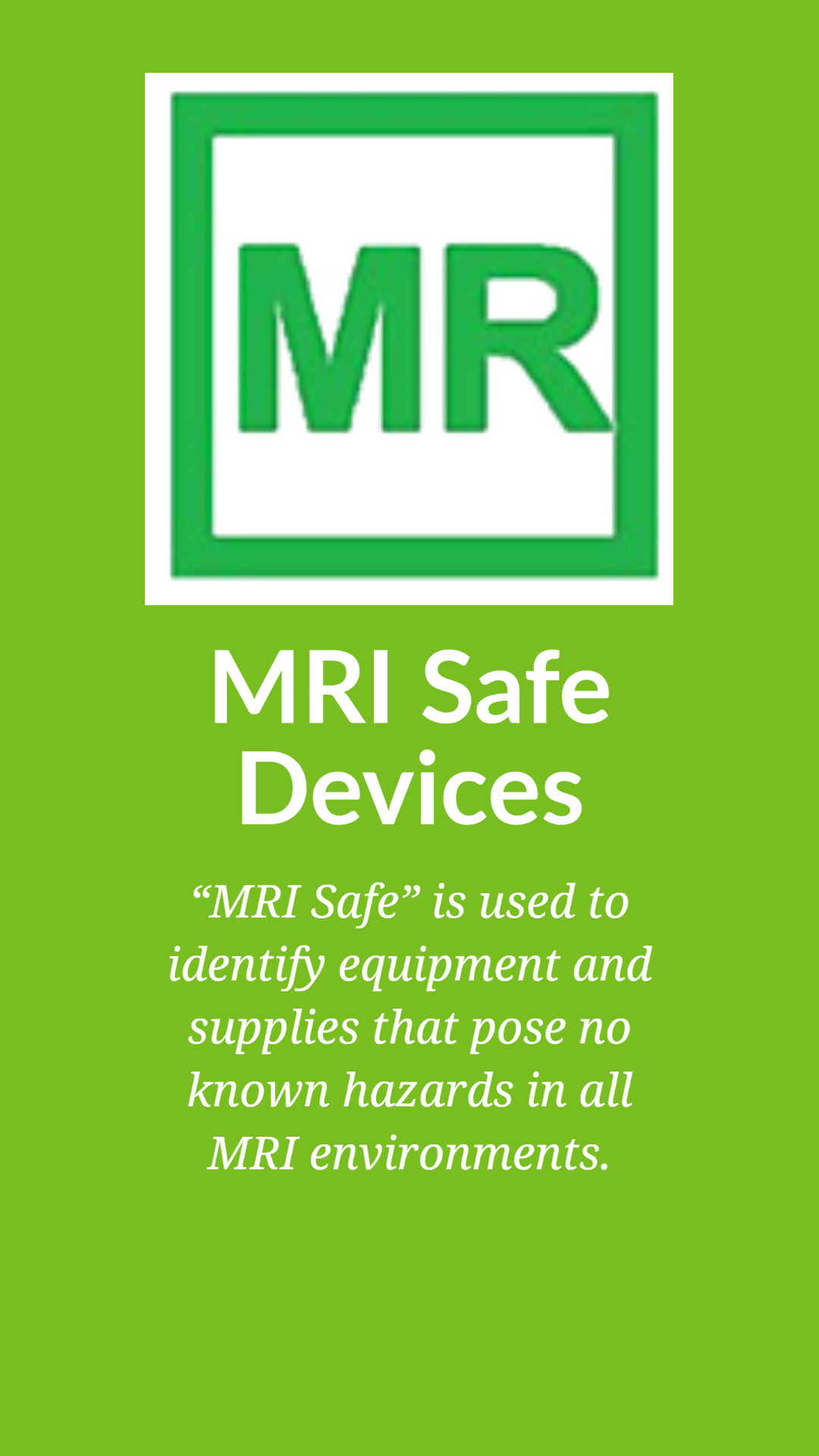
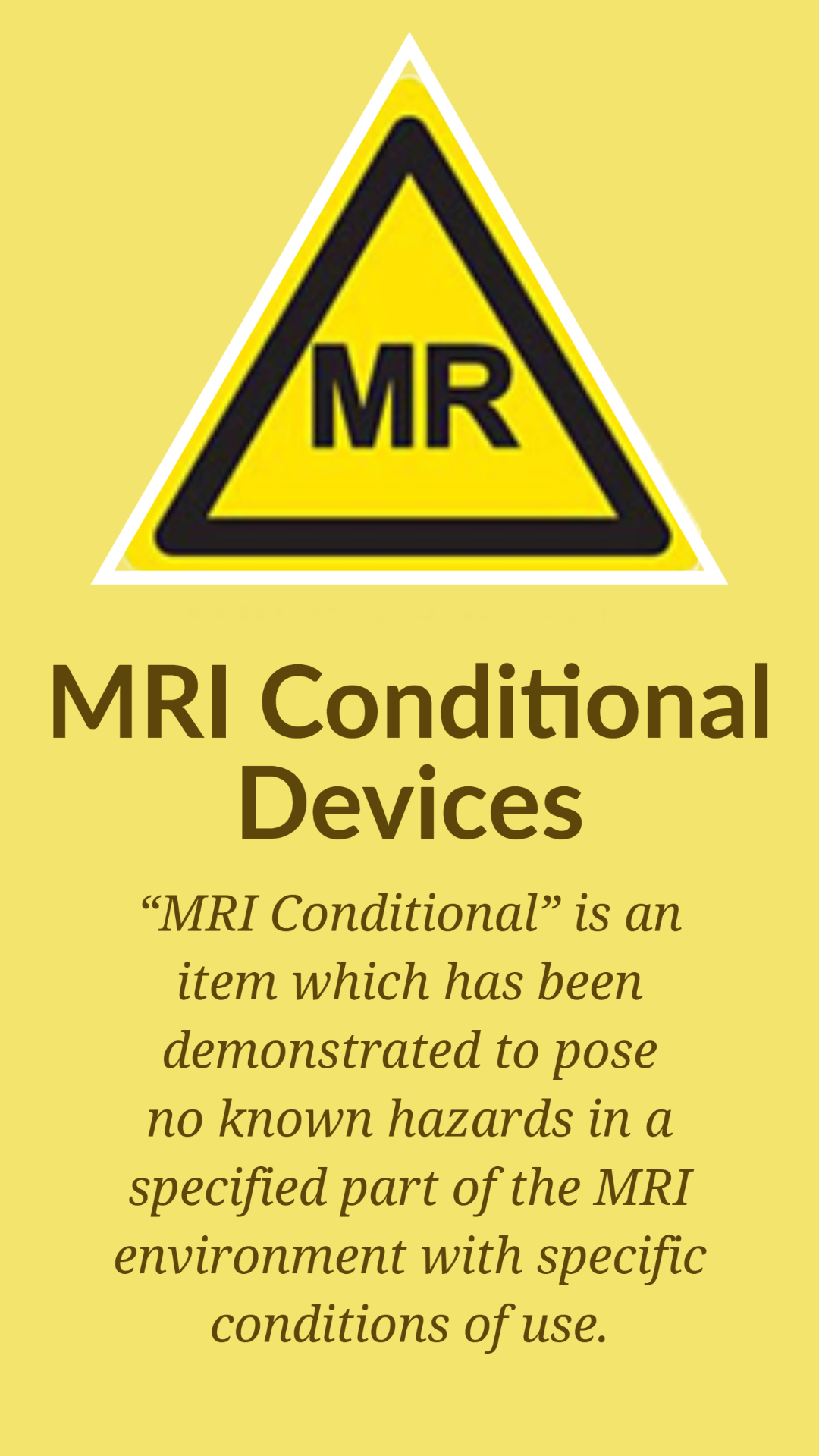
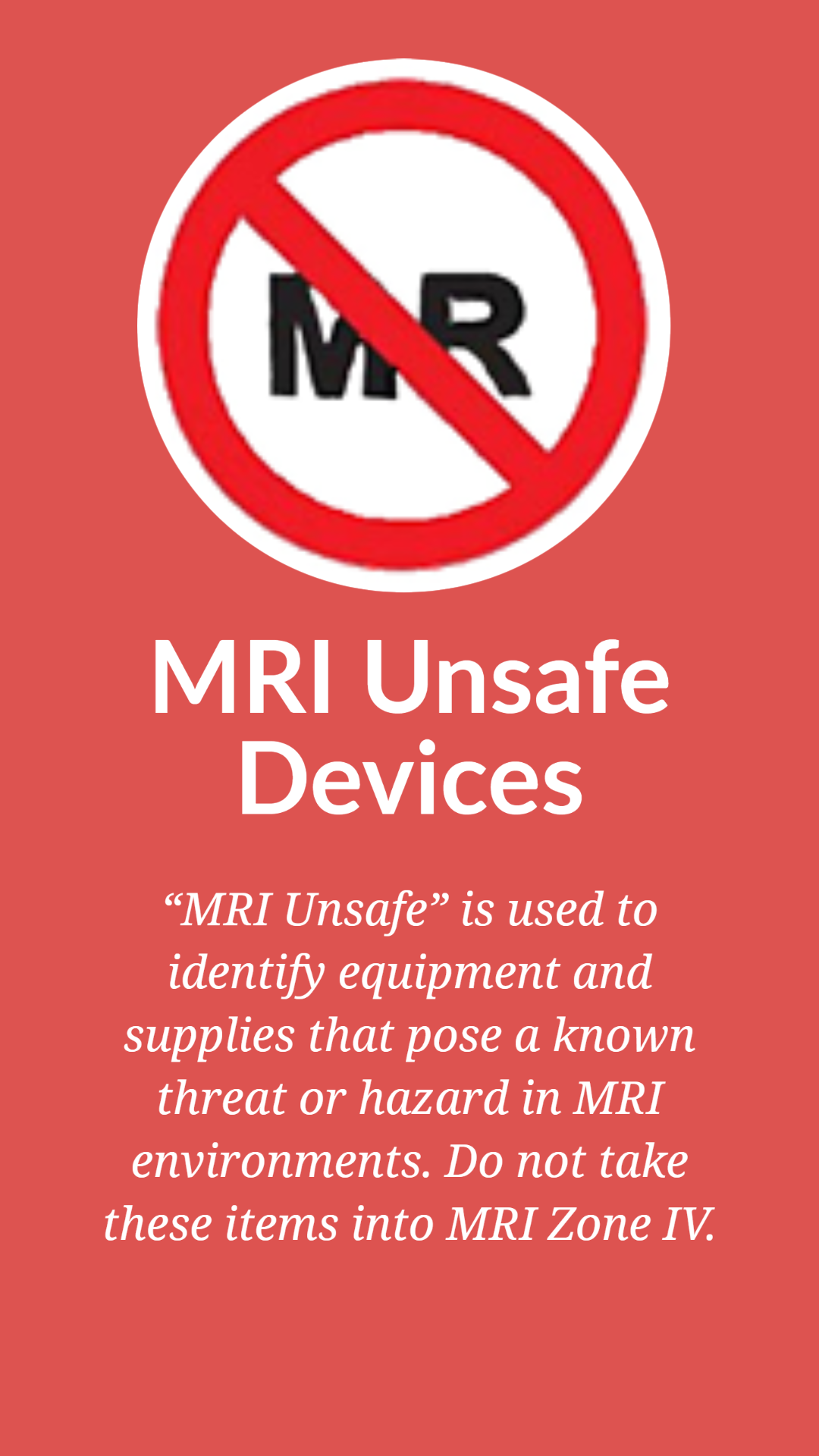
MRI unsafe devices
These medical devices are absolute contraindications for obtaining an MRI scan or for an employee to enter Zone IV. These can include:
- VAD – Ventricular Assist Device
- Insulin Pumps
- Most Tissue Expanders for Breast Reconstruction Surgery
- Swan-Ganz Catheters with thermo-dilution tips
- Ferromagnetic or unidentifiable aneurysm clips of the brain
- Shrapnel/Bullet Fragments/Pellets near a vital organ or vessel
- Metal or Foreign Bodies in the eye – an X-ray may be necessary prior to MRI to evaluate
The MRI scanner can also disrupt the function of battery-operated equipment and devices such as:
- Continuous Glucose Monitors (CGMs)
- Programmable Infusion Pumps (such as IV fluid or PCA pumps)
- Any other electromagnetic device
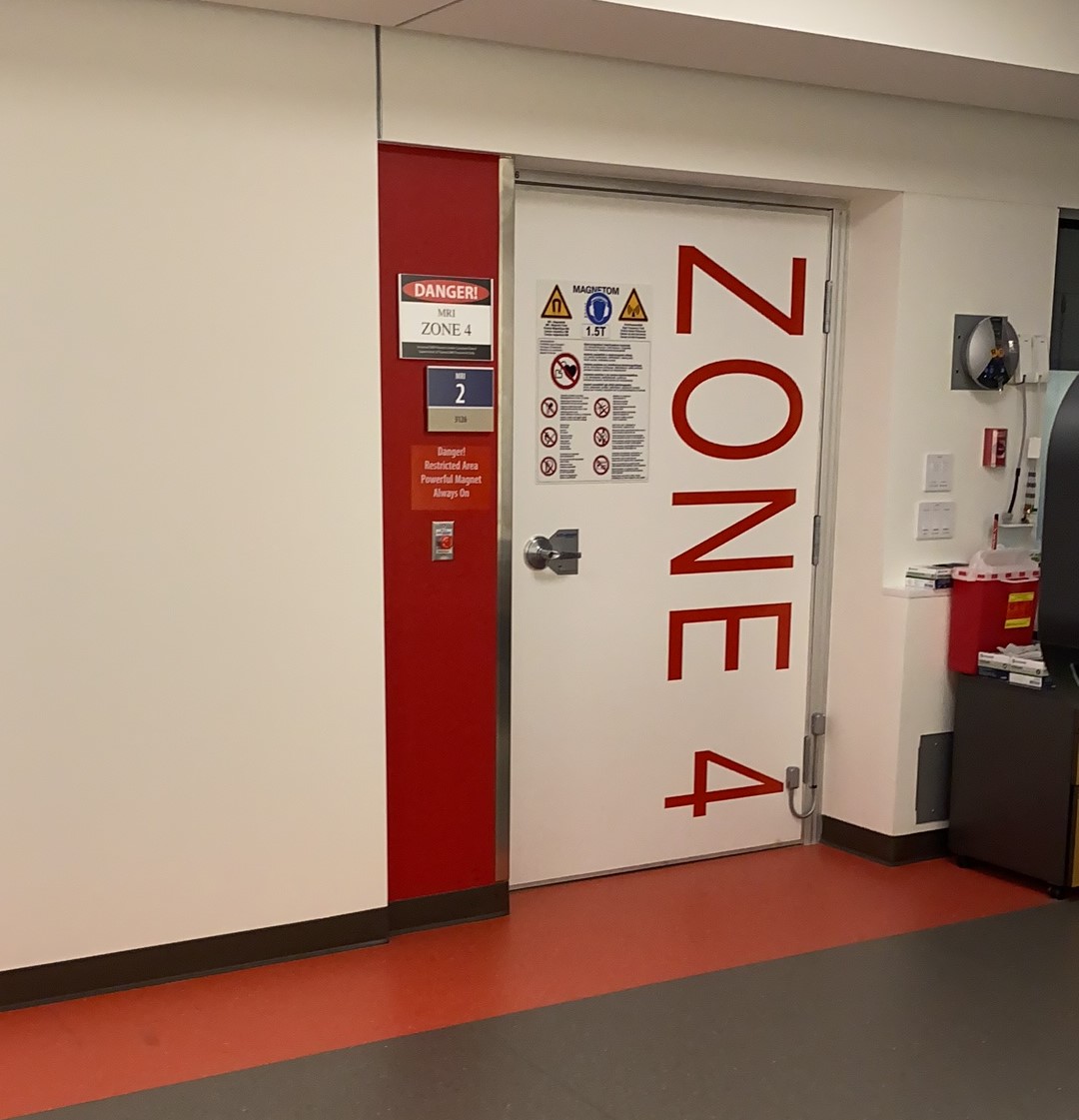
If you have questions about the safety of implanted devices in an MRI environment, please email us at: MRISafety@ohsu.edu